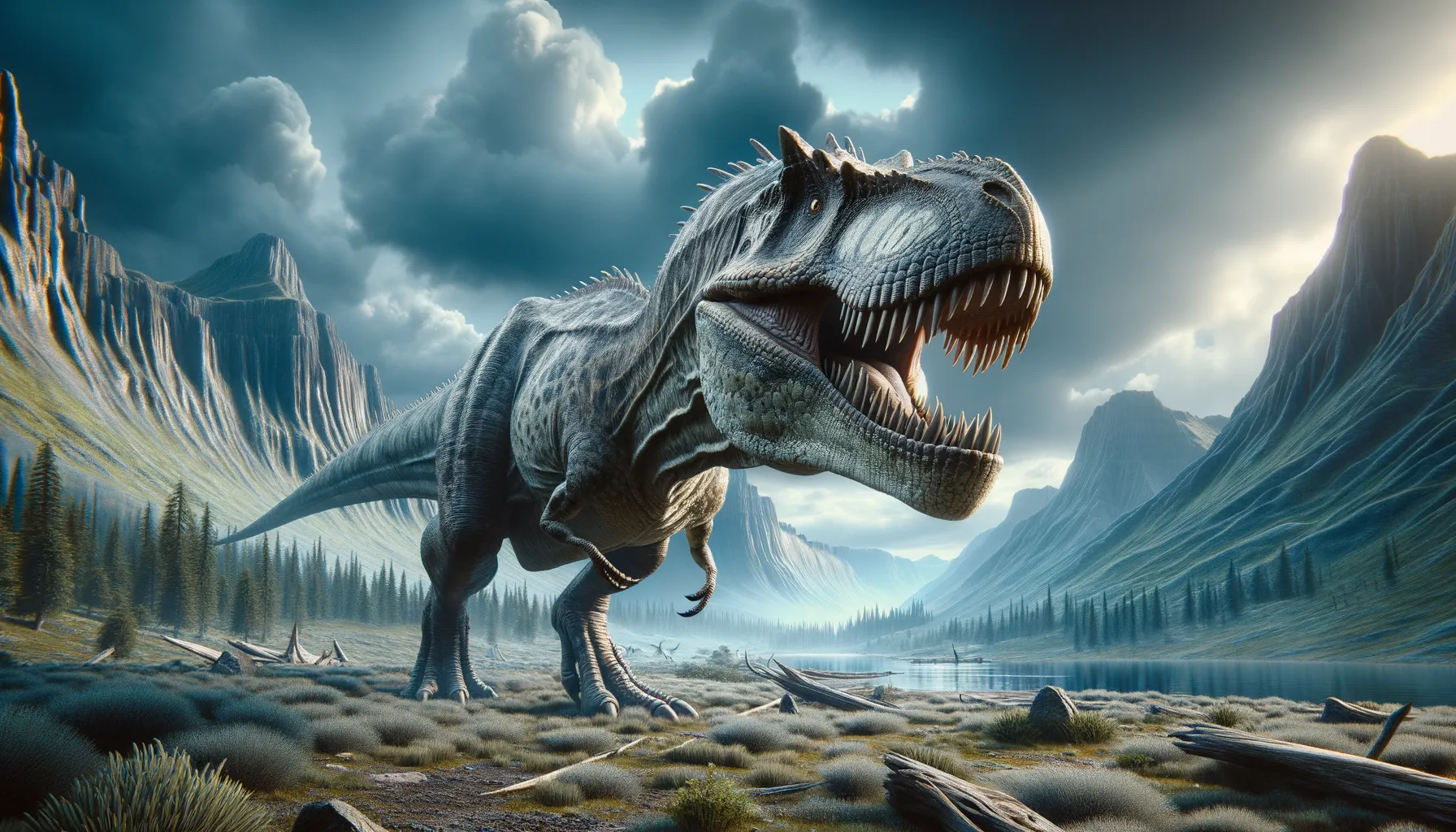
Carcharodontosaurus
A giant predator of prehistoric Africa.
Period
Cretaceous
Length
Could reach lengths of up to 40 feet.
Height
Stood approximately 13 feet tall at the hips.
Weight
Estimated to weigh around 6 to 15 tons.
Carcharodontosaurus was a massive carnivorous dinosaur that roamed the lands during the Cretaceous period. Equipped with sharp, serrated teeth similar to those of a great white shark, it was one of the top predators of its time. This formidable dinosaur was discovered in North Africa, providing scientists significant insights into the ecosystems of that era. Its size and power rivalled those of the famous Tyrannosaurus rex.
Diet
As a carnivore, it primarily fed on large herbivorous dinosaurs. Its formidable sharp teeth made it adept at slicing through flesh, allowing it to tackle big prey.
Hunting
Carcharodontosaurus likely used ambush tactics to catch its prey, relying on its powerful legs for short bursts of speed. It was possible that it hunted alone due to its size, dominating its territory.
Environmental challenges
Carcharodontosaurus faced competition from other large predators in its ecosystem, which could have influenced its hunting strategies and territories. The changing climate and landscape during the Cretaceous period might have also impacted the availability of prey. Furthermore, environmental pressures including volcanic activity and changing sea levels could have posed additional challenges to its survival.
Speed
It was moderately fast, capable of brief sprints.
Lifespan
It likely lived for around 20 to 30 years.
First discovery
First discovered in North Africa in 1924.
Fun Facts
- Carcharodontosaurus was one of the largest carnivorous dinosaurs, even bigger than the famous Tyrannosaurus rex.
- Its name means 'shark-toothed lizard' due to its sharp and serrated teeth, which were similar to those of a shark.
- Carcharodontosaurus lived around 100 million years ago during the mid-Cretaceous period.
- This massive predator roamed what is now Northern Africa, in regions that were lush and filled with large herbivorous dinosaurs.
- The first fossils of Carcharodontosaurus were discovered in the Sahara Desert in the early 20th century.
- Carcharodontosaurus had a very long skull, measuring more than 1.5 meters, which helped it catch large prey.
- Despite its fearsome size, Carcharodontosaurus was likely not the fastest runner, relying on ambush tactics to hunt.
Growth and Development
As a theropod dinosaur, Carcharodontosaurus grew rapidly in its early years, likely reaching full size by early adulthood. Its growth rate would have been supported by a high-energy diet, necessitating frequent hunting. The skeletal structure reveals adaptations that allowed it to support its massive body, which would have required significant resources to maintain.
Habitat
Carcharodontosaurus inhabited a variety of landscapes, including lush, dense forests and arid, open plains of what is now North Africa. These environments provided ample hunting grounds and diverse prey species. The region was characterized by warm, tropical climates, which supported a rich diversity of life.
Interaction with other species
As a top predator, Carcharodontosaurus occasionally competed with other large carnivores, leading to possible confrontations. However, it might have had symbiotic relationships with smaller scavengers that followed it to feed on leftovers. Interaction with herbivorous species was primarily predatory, as it occupied the top of the food chain.
Natural lifespan
It lived for up to 20 to 30 years in the wild.
Reproduction
Like most theropods, Carcharodontosaurus would have laid eggs, presumably in a secluded nest to protect from predation. Evidence suggests that such dinosaurs might have demonstrated some form of parental care, guarding their nests until the young hatched. The hatchlings, upon emerging, were initially vulnerable and would have required quick growth to survive.
Social behaviour
Evidence suggests Carcharodontosaurus was likely a solitary predator, focusing on hunting efficiently on its own. However, occasional gatherings could have occurred if multiple individuals targeted a large carcass. Its behavioral patterns were driven largely by the need for territory and food.
Fossil locations
Fossils of Carcharodontosaurus have been primarily found in the Sahara Desert, particularly in regions that were part of ancient North Africa. These discoveries have highlighted the diverse species that inhabited these prehistoric landscapes. The desert's harsh conditions have preserved these fossils meticulously over millions of years, providing crucial insights into the Cretaceous period's ecosystems.
